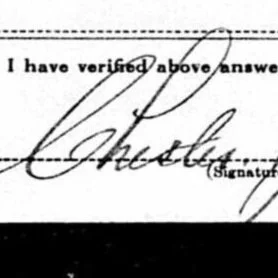A Romance of the Movies
“A Romance of the Movies” is a lost film from 1921 which was produced by Leon Goetz while he was still proprietor of the Monroe Theater. A few months later legal trouble would force Leon Goetz to divest; he and his brother would continue their theater management business outside of Monroe, WI.
The star of the film was a local girl named Edith May Leuenberger, who had recently returned from a six to eight week stint as a chorus girl in Florenz Ziegfeld’s “Follies” and “Midnight Follies”, which were staged in New York City. Her time there was part of a prize she won through the ‘National Salesgirls’ Beauty Contest’. This contest was outwardly supported by a newspaper content company called ‘Newspaper Enterprise Association’; but in reality was run by Photoplay Magazine and Ziegfeld Follies management.
Edith May’s experiences at the Follies were not positive; she gave a number of weak reasons why she didn’t want to go back even though Ziegfeld offered her a contract. In my upcoming book, I will explore evidence which suggests Follies girls may have been pressured into appearing in pornographic photographs and possibly even prostitution.
An incredible amount of hype accompanied Edith May’s early win; she and the other finalists even appeared in a “Kinograms” newsreel, which I would compare to modern BBC press coverage. The hype was in reality out of proportion to the newsworthiness of the event and “movie star” Edith May was promoted before the seventeen-year-old had even been cast in a movie.
Edith May’s emotions on returning to Monroe were probably complex. She had very publicly declared her desire to be a star at all costs; enjoyed the manic bustle around showgirl life; and been traumatized by some unnamed occurrence. Back home things were both quiet and dogged by the whiff of failure. Edith May would have been vulnerable at this time to local movie entrepreneurs such as Leon Goetz, the Unitarian Universalist Reverend N. E. McLaughlin, and others who wished to exploit her and her story.
April 19th 1921 advertisement for Edith May’s only movie. This probably came from the Monroe Times, but I have yet to locate its source. Clipping is held by the Green County Historical Society. It is unlikely that a movie would have been shot for a single-time viewing.
“A Romance of the Movies” was supposed to be a biography of Edith May, focusing on her beauty contest win and the aftermath. A core feature of the press around her win was the young beauty queen’s sexual vulnerability in NYC. Headings like “Would you let your daughter do this?” and “STAGE JOHNNIES!” were typical of the nation-wide newspaper coverage of the event. Her syndicated column was full of advice about how to deal with unwanted sexual attention and how, if a girl is harassed, she must have brought it on herself. These pearls were, of course, accompanied by photos of Edith May in skimpy showgirl costumes and admonitions to always give the manager what he wants.
This is an April 1921 advert for Edith May’s “A Romance of the Movies”. Clipping held by Green County Historical Society.
Even though the film has been lost, we can see from the nature of the story line that it would have followed a format very typical of pornographic movies at that time: exploiting sex by ‘educating’ the viewers on the dangers of inappropriate sexual behavior. This sort of education was very often done through church halls as a way to avoid censors. As the decade rolled on, “Health Films” would become a seedy mainstay of the low-budget US movie scene, and even enjoyed subsidization from the US military.
“A Romance of the Movies” would not have shown Edith May naked; it wouldn’t have looked like a typical modern pornographic film. It would have, in the lingo of the industry, “sold the sizzle not the steak”. It would have peddled innuendo for most of the run time and ended on a moral high note. That July, a few months after the movie’s Monroe showing, Leon Goetz would be arrested and indicted for violating the Mann Act, which was designed to combat organized prostitution and the “White Slave Trade”. Goetz would go on to make at least one other ‘health film’ with shady business partners based on Chicago’s Wabash Avenue, the Second City’s answer to Hollywood’s “Poverty Row”.
Oct. 6th 1920 image from The Wisconsin State Journal. Edith May shakes ‘beauty connoisseur’ Florenz Ziegfeld’s hand. The caption reads “The Picture shows Flo Ziegfeld, famous beauty expert and producer fo the “Follies”, shaking hands with Edith May Leuenberger, the “wildflower of Wisconsin,” winner of the nation-wide beauty contest, conducted by the associated newspapers of the Newspaper Enterprise Association.”









